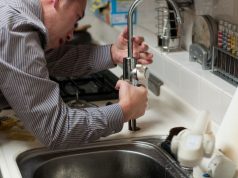The use of aluminum foil is a staple in many kitchens, offering convenience for food storage, wrapping, and even cooking. However, when it comes to microwaving, there are concerns about safety. Understanding how long aluminum foil can safely be in the microwave is crucial to avoid potential hazards. In this article, we will explore the fundamentals of aluminum foil, the risks associated with using it in the microwave, and provide guidelines to ensure safe usage. Let’s delve into the world of aluminum foil and microwave ovens to help you make informed decisions in your kitchen.
How Long Can Aluminum Foil Be In The Microwave ?
Aluminum foil should not be used in a microwave under any circumstances. It can cause sparks, fires, and damage to the appliance. To avoid hazards, it’s best to completely refrain from placing aluminum foil in the microwave and opt for microwave-safe alternatives like glass or ceramic containers.
The Basics Of Aluminum Foil
Aluminum foil is a versatile kitchen tool with a wide range of applications. It is made from thin sheets of aluminum metal, which are rolled to create a flexible, metallic material that is both lightweight and durable. This material is known for its exceptional heat conductivity and resistance to moisture and chemicals, making it a popular choice for various culinary tasks.
One of the primary uses of aluminum foil is for food preservation. It acts as a barrier against moisture, air, and light, helping to keep food fresh for longer periods. Whether wrapping leftovers, sandwiches, or raw ingredients, aluminum foil is an effective choice for preventing spoilage and maintaining the quality of food.
Additionally, aluminum foil plays a crucial role in cooking and baking. It is often used to line baking sheets, pans, or grills to prevent sticking and simplify cleanup. The reflective surface of aluminum foil also helps distribute heat evenly, ensuring that food cooks or bakes uniformly.
How Microwaves Interact With Aluminum Foil?
Microwaves interact with aluminum foil in a unique and potentially dangerous way due to the metal’s conductive properties. When exposed to microwaves, several key interactions occur:
- Reflecting Microwaves: Aluminum foil reflects microwaves due to its metallic surface. This can cause the microwaves to bounce off the foil and affect the cooking process. In some cases, this may lead to uneven heating as microwaves are redirected away from the food.
- Creating Electric Currents: When aluminum foil is crinkled or has sharp edges, it can create areas where electric currents are concentrated. These concentrated currents can generate sparks when exposed to microwaves. These sparks pose a fire hazard and can potentially damage the microwave.
- Overheating: The uneven distribution of electric currents in crinkled or sharp-edged foil areas can result in localized overheating. This excessive heat can cause the foil to melt or even ignite, leading to a fire in the microwave.
- Blocking Microwaves: In some cases, if aluminum foil is tightly sealed around food, it can effectively block microwaves from reaching the food inside. This can prevent the food from heating properly and may damage the microwave due to reflected microwaves.
Tips To Minimize Risks When Using Aluminum Foil
- Use Microwave-Safe Dishes: Whenever possible, use microwave-safe glass or ceramic containers instead of aluminum foil. These materials do not pose the same risks and are designed for safe microwave use.
- Keep Foil Flat and Smooth: If you must use aluminum foil, ensure it is flat, smooth, and covers the food without any wrinkles, creases, or sharp edges. This reduces the risk of sparking or overheating.
- Use Small, Flat Pieces: Cut aluminum foil into small, flat pieces rather than using large sheets. Smaller pieces are less likely to cause problems in the microwave.
- Allow Space: Leave a gap between the foil and the walls of the microwave to prevent sparking. Ensure there is sufficient space for airflow and microwave waves to circulate.
- Do Not Seal Tightly: Do not tightly seal food with aluminum foil in the microwave. Leave openings or vents to allow steam to escape. Sealed packages can cause pressure buildup and potentially lead to accidents.
- Use Only for Shielding: Aluminum foil can be used as a shield to protect certain parts of food from overcooking. For instance, you can cover the edges of a casserole dish with foil to prevent them from burning while allowing the center to cook.
- Monitor Closely: While using aluminum foil in the microwave, stay nearby and monitor the cooking process. If you notice any sparks, immediately stop the microwave and remove the foil.
- Avoid Aluminum with Labels or Decorations: Some aluminum foil products have decorative designs or labels that may contain metal inks. Stick to plain, unmarked foil to reduce the risk of sparking.
- Know Your Microwave: Familiarize yourself with your microwave’s specific guidelines and restrictions regarding the use of aluminum foil. Some microwaves may have different recommendations or limitations.
- Be Mindful of Metal Utensils: Avoid using metal utensils, such as forks or knives, in conjunction with aluminum foil in the microwave, as they can create sparks and pose additional hazards.
What To Do If There’s A Problem?
If you encounter a problem while using aluminum foil in the microwave, such as sparking, smoke, or an emergency situation, follow these steps to ensure your safety and address the issue:
- Stop the Microwave Immediately: If you see any sparks or unusual activity, stop the microwave by pressing the “Stop” or “Cancel” button. Do not open the microwave door right away, as there may be a fire risk.
- Unplug the Microwave (if necessary): If you cannot stop the microwave using the control panel, unplug it from the electrical outlet to cut off the power supply.
- Assess the Situation: Carefully inspect the microwave to determine the source of the problem. If there is a fire, do not attempt to put it out with water; use a fire extinguisher designed for kitchen fires, or close the microwave door to deprive the fire of oxygen and call emergency services.
- Allow the Microwave to Cool: If there was sparking but no fire, leave the microwave door closed for a while to allow any potential fires inside to extinguish themselves and to let the microwave cool down.
- Ventilation: Open windows and doors to ventilate the area and dissipate any smoke or fumes.
- Check for Damage: Inspect the microwave and aluminum foil for damage. If the foil was significantly scorched or damaged, discard it safely.
- Seek Professional Help: If the microwave appears to be damaged or malfunctioning, do not attempt to use it again until it has been inspected and repaired by a qualified technician.
Conclusion
In conclusion, the use of aluminum foil in the microwave can pose serious risks, including sparking, fires, and damage to the appliance. To ensure your safety in the kitchen, it’s advisable to avoid using aluminum foil for microwaving and instead opt for microwave-safe containers and cookware. By following safe microwave practices and being mindful of the potential hazards associated with aluminum foil, you can protect yourself, your appliances, and your home. Prioritizing safety is essential for a seamless and worry-free cooking experience in the modern kitchen.
FAQ’s
Can I Use Aluminum Foil In The Microwave?
No, it’s not recommended. Using aluminum foil in the microwave can lead to sparking, fires, and damage to the appliance.
Why Does Aluminum Foil Spark In The Microwave?
Aluminum foil sparks in the microwave due to its conductivity and the formation of electric currents, particularly around sharp edges or wrinkles.
Can I Use Aluminum Foil For Shielding In The Microwave?
Yes, but use caution. You can use small, flat pieces of aluminum foil as a shield to protect certain parts of food from overcooking, but avoid tightly sealing food.
How Can I Safely Use Aluminum Foil In The Microwave?
Ensure it’s flat and smooth, leave space between the foil and oven walls, and closely monitor the cooking process to prevent sparking or overheating.
What Should I Do If Aluminum Foil Sparks In The Microwave?
Immediately stop the microwave, unplug it if necessary, and assess the situation. Do not open the door if there’s a fire risk, and use a fire extinguisher if needed.




















